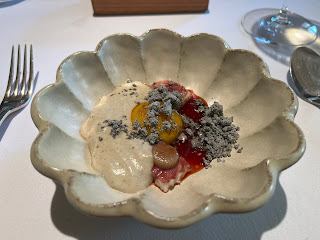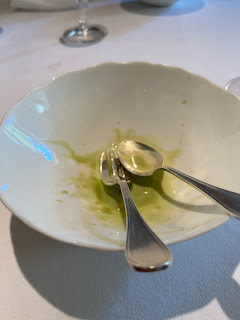Most people know about Romeo and Juliet.
Many people know about Tristan and Isolde
But the story of Ines and Pedro, an equally tragic love story of epic proportions, involving real people, should be equally as well known.
Pedro the prince married a princess, but at the wedding fell in love with his new bride's young cousin Ines. He dutifully fathered a son by his wife, but met secretly with Ines. When his wife died, Pedro and Ines lived together as a married couple in Coimbra and had several children.
However, Pedro's father, King Afonso IV, worried about these children laying claim on the throne ahead of the "legitimate" line and he had Ines murdered. Beheaded in fact.
In rage, Pedro rose up against his father with a small army, refusing to ever forgave him. After Afonso died and Pedro became king, Pedro ordered the arrest of the men who had killed Ines, ordered them to kiss her now exhumed (and probably pretty stinky) body before he cut out their hearts and ate them.
Pedro swore he had been legally married to Ines, insisted that she be recognized as the Queen of Portugal and had two magnificent tombs built for both her and himself in Alcobaca so that they could be beside each other for eternity.
In fact, the tombs lie foot to foot, so that when the resurrection happened they will rise up and face each other.
Now that's amore
 |
| Judgement day, when everyone is rewarded or punished, overseen by Ines and Pedro from their expensive seats there on the right of Ines tomb |
 |
| Ines's tomb |
 |
| Angels supporting Ines |
 |
| The Wheel of Fortune, showing Ines's beheading and vindication on the right |
 |
| Angels supporting Pedro |
 |
| One tomb at one end, with the other across the hall |
.jpg)











































